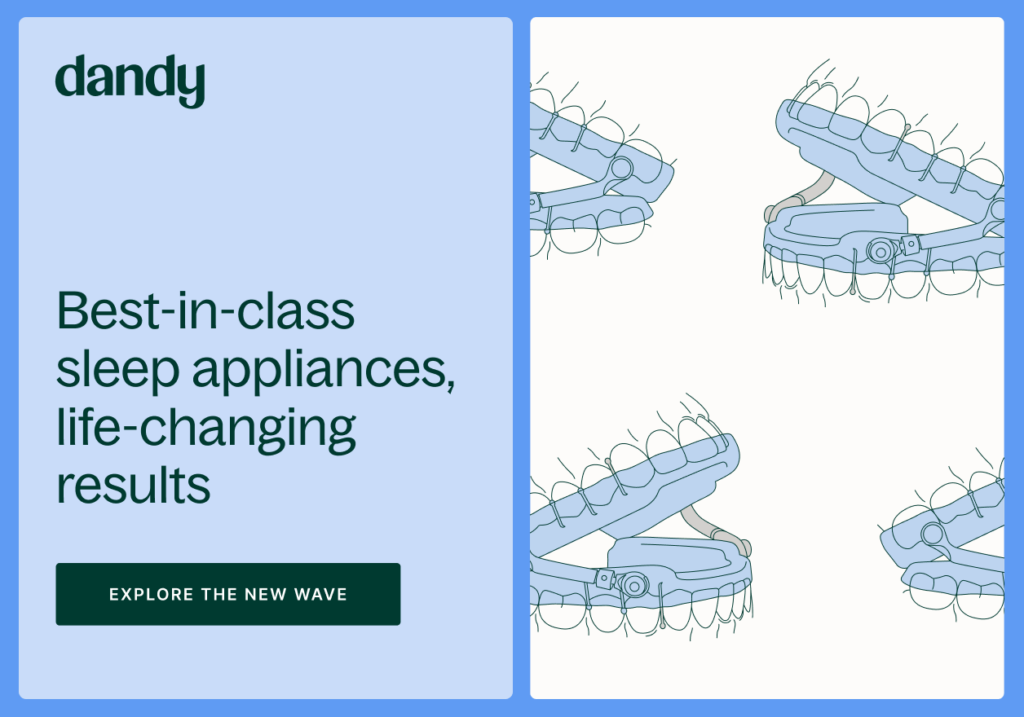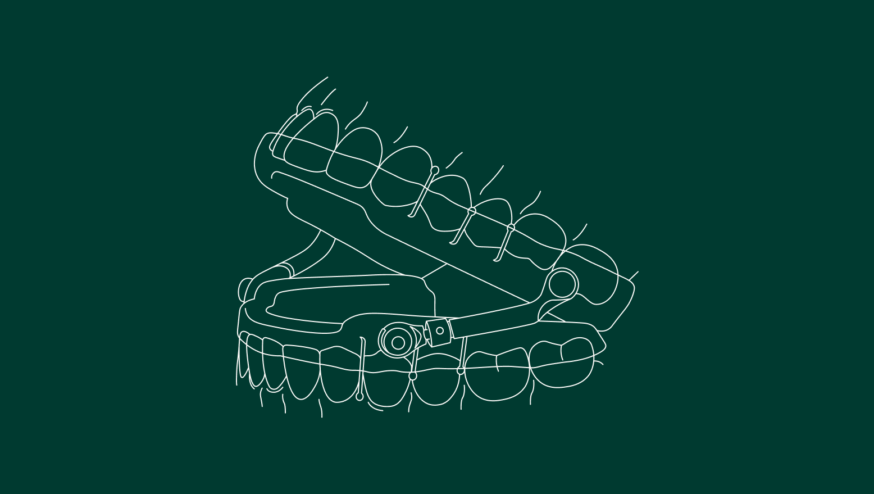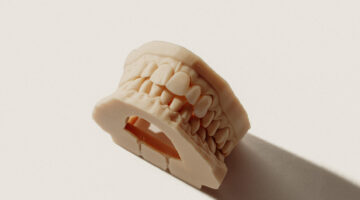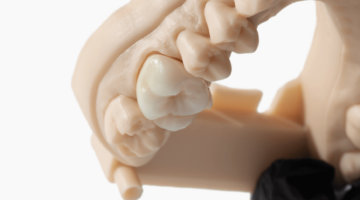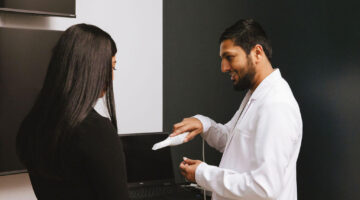General dentists can now contribute to sleep apnea treatment which is about time as, according to the American Academy of Sleep Medicine, about 1-in-4 Americans suffer from some form of sleep apnea. While this will add an incredible clinical service to your practice—not to mention another revenue stream—the sleep apnea diagnosis and treatment process is different from other services as is how you need to bill insurance. Following we will walk you through how dentists need to bill medical insurance for sleep apnea, what the dental insurance codes are for sleep apnea, if Medicare will cover sleep apnea treatment (yes, but read on for details), and how Dandy has made the process more streamlined for our dental practice partners.
Medical billing for sleep apnea oral appliance therapy
Oral appliance therapy (OAT) for sleep apnea is medical insurers’ most commonly approved dentist-applied treatment. This is primarily for two reasons: 1. the danger posed by sleep apnea to patient health and wellbeing, and 2. intraoral appliances tend to be much less costly than the cumbersome C-PAP machines overall.
But this does not mean that medical insurance makes the billing process straightforward for dentists treating sleep apnea with an oral appliance (though dentists who partner with Dandy have medical billing partner that streamlines it, see next section). Policy Limitations, lengthy pre-authorization, high deductibles, and/or the rare C-PAP requirement may all complicate an otherwise straightforward process.
That’s why, if you want to offer medical insurance billing for sleep apnea treatment as a dentist, it’s crucial for you to:
- Set the motion to obtain OAT approval
- Have all of the relevant medical provider-side documentation at the ready (including your NPI number and current HCFA forms)
- Include questions related to sleepiness/sleep apnea in your normal medical history/intake process
- Set proper financial expectations for medical insurance reimbursement
Sleep apnea oral appliance pre-authorization
During pre-authorization, insurers make a determination regarding a procedure’s medical necessity. The system can be protracted and obtuse, but if you prepare yourself and office staff, it can be streamlined, eventually becoming a regular part of your billing process.
When billing medical insurance for sleep apnea, there are a few elements you can almost guarantee will be requested by insurers during pre-authorization.
As much of these initial steps require a relatively higher level of coordination with your patient, it may be a good idea to regard this stage as pre-pre-authorization, that is, an initial agreement between yourself and your patient to begin treatment, which starts the ball rolling.
Virtually without exception, pre-authorization will require obtaining a concurrent diagnosis/referral from an M.D., including a letter of medical necessity. This almost certainly requires a sleep study, but more on that later.
Another element you’re sure to need is recent imaging for the patient; most likely a pano X-ray and/or CBCT.
Finally, it is vital that you contact the insurer to obtain a list of all the required pre-authorization elements, including paperwork. Do NOT rely on any custom or boilerplate forms, or any obtained from a different insurer. Most medical insurance companies make their forms available for download on their website, but to save yourself from doubling-back, contact the insurer regarding your specific patient’s policy. In some rare cases, a pre-authorization is not required at all, but you should still make contact with the insurer to request a pre-determination of benefits for review with the patient.
If pre-authorization is denied, you can contact the insurer to find out how you can address their concerns/which additional information is required before re-submitting or appealing the decision. If the pre-authorization is denied again, it’s time to have a discussion with the patient about other options i.e. Carecredit or payment plans.
If all goes well, pre-authorization typically takes two to three weeks. Once it has been approved, now is the time to begin the treatment process in earnest.
Note: Every state and insurer has different rules and guidelines for pre-auths, so before embarking on the process, it’s important to familiarize yourself with state policy and consult the medical insurance in question.
Do insurance carriers accept home sleep testing results when approving the pre-authorization for oral appliance therapy?
As previously stated, a sleep study is virtually guaranteed to be required as part of pre-authorization for a dentist billing medical insurance for sleep apnea, but there are different types of sleep studies and different regulations for prescribing them.
The gold standard of sleep studies is an in-lab polysomnogram (PSG) requiring a patient to spend the night in a lab. This test is comprehensive and monitored, but inconvenient and may not be feasible for your patient. With very few exceptions, insurers accept the results of at home sleep tests (HST). HSTs involve loaning small, minimally invasive devices out to patients who wear the equipment during sleep. Airflow, arousal, and blood-oxygen level data are collected and interpreted upon the devices’ remand.
Many state dental boards find prescribing a home sleep study falls within the scope of dental practice. In others, only an M.D. may prescribe sleep studies. If your practice is located in a state that allows you to prescribe HSTs, consider purchasing the equipment for rental to patients. This can save time, make your practice feel more comprehensive for sleep apnea patients, and reduce variables like coordinating with a third-party.
Note: regardless of where an HST was prescribed, medical insurance pre-authorization will require the results to be analyzed by an M.D. As such, it makes good sense for you to cultivate relationships with local M.D.s and/or sleep specialists.
How recent should a sleep study be to qualify a patient for sleep apnea treatment with an oral appliance?
Except for Medicare patients whose test must have taken place within the last 12-months, most insurers will accept the results of any test performed within the past 24 months. Please contact an insurer just to make sure.
Sleep apnea insurance billing workflow with Dandy
Dandy has partnered with Nierman Practice Management to provide an option for our partner practices to streamline medical billing for sleep apnea. Nierman Practice Management (NPM) is an expert in this space and uses intuitive and simple to use software for doctors to easily track everything for medical billing and they deal with the actual process of obtaining reimbursement for the practice. Dandy dental practice partners are able to register with NPM with a 50% reduction in the registration fee (if you are a current Dandy partner adding the service please contact your account manager for code). Just one case per month justifies the cost and margins multiply with volume—for sample dollar amounts per patient contact a Dandy rep.
Dandy and NPM sleep apnea workflow
- Dentist and patient will upload insurance information to NPM’s website
- NPM will check the patient’s insurance eligibility
- Dentist will scan and order the intraoral appliance through Dandy
- Dandy will design, fabricate, and ship the appliance
- Dentist will place the appliance in the patient’s mouth and ensure proper fit and comfort
- NPM will bill the medical insurance
- Dentist will receive reimbursement
- If the insurance does not cover the entire charge, dentists can bill the patient for the remainder
Does Medicare pay for sleep apnea oral appliances?
Medicare will indeed pay for sleep apnea oral appliances, but only custom devices purpose-made for treating obstructive sleep apnea.
“Oral appliances used to treat obstructive sleep apnea (OSA) are covered under the Durable Medical Equipment benefit (SSA 1861(s) (6)). In order for a beneficiary’s equipment to be eligible for reimbursement the reasonable and necessary (R&N) requirements set out in the related Local Coverage Determination must be met… All follow-up care, including fitting, adjustments, modifications, professional services (not all-inclusive) required during the first 90 days after provision of the oral appliance are considered to be included in the payment for device.” (Source: CMS.gov)
Dental codes for sleep apnea
OSA ICD10 (diagnosis) code:
G47.33 (adult & pediatric)
HCPCS/CPT (service rendered) code(s):
E0486
Note: the above code is only for custom-fabricated mandibular advancement devices specifically for treating obstructive sleep apnea.
CPT Home Sleep study codes:
95800 — Sleep study, unattended, simultaneous recording; heart rate, oxygen saturation, respiratory analysis (eg. by airflow or peripheral arterial tone), and sleep time.
95801 — Sleep study unattended w/ respiratory analysis.
95806 — Sleep study, unattended, simultaneous recording of, heart rate, oxygen saturation, respiratory airflow, and respiratory effort.
G Home Sleep Study codes:
G0398 — Sleep study, w/ type II portable monitor; unattended; minimum of 7 channels: EEG, EOG, EMG, ECG/heart rate, airflow, respiratory effort, and oxygen saturation.
G0399 — Sleep study w/ type III portable monitor; unattended; minimum of 4 channels: 2 respiratory movement/airflow, 1 ECG/heart rate and 1 oxygen saturation.
G0400 — Sleep study w/ type IV portable monitor; unattended; minimum of 3 channels.
(Sources: CMS.gov, AASM.org)
CDT 2024 codes:
D9947 — Custom sleep appliance fabrication and placement
D9948 — Adjustment of custom sleep apnea appliance
D9949 — Repair of custom sleep appliance
Different insurers require different codes. Please contact the specific insurer to confirm which codes you should utilize.
Why your practice should offer sleep apnea oral appliances
There are some excellent reasons for your dental practice to offer sleep apnea treatment.
First and foremost, treating sleep apnea will allow you to help a greater number of people. In the US, there are 202,536 practicing dentists and only about 7,500 sleep specialists. In large swaths of the US, a dearth of comprehensive medical care and specialists has historically kept diagnosis let alone treatment of obstructive sleep apnea out of the general purview. But it doesn’t have to be that way. If a patient gets into your chair and you suspect they may suffer from sleep apnea, you can now offer treatment for a serious health-risk of which they might otherwise be totally unaware.
Second, by broadening the scope of your practice, you’re growing your business. This is pretty self-evident, but even if a person doesn’t regularly see a dentist, by treating their sleep apnea, you have increased their lifetime value as a patient and you remain connected to their network of friends and family—if you take a look at the Dandy Dental Study: Patient Experience, you’ll see the collateral value of a patient’s network.
Finally, dentists’ effective treatment of sleep apnea can help change the larger conversation around ‘wellness’ and a holistic approach to overall health. At one time, slight to moderate obstructive sleep apnea’s potential affects on weight, productivity, psychology, and heart-health may have been easily outweighed by the known life disruption and cost of a C-PAP. Now, as the technology for fitting sleep apnea appliances has gotten so precise and comfortable, treating the disorder (wearing the appliance every night) can be portrayed as a low-commitment aspect of overall self-care akin to regular dental cleanings and medical checkups. By introducing sleep apnea treatment to your practice, you can be the face of your community’s changing attitudes toward health.
